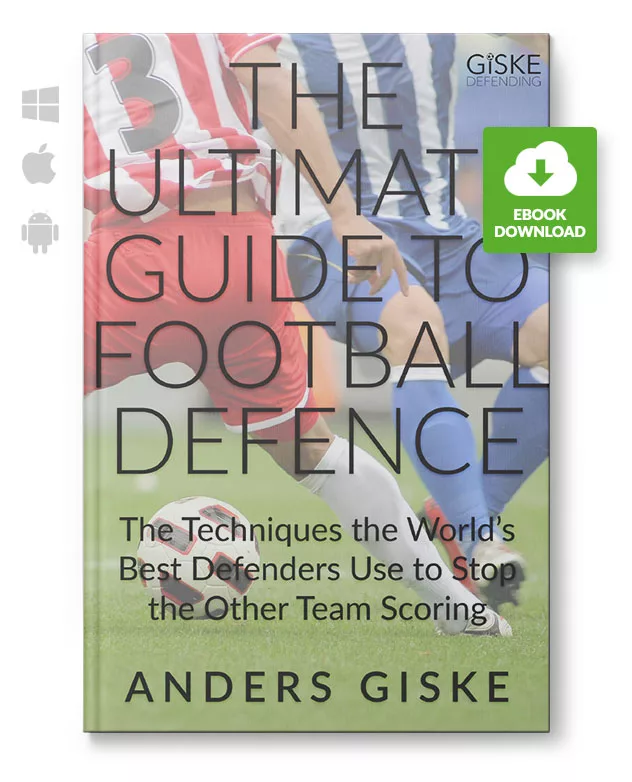Soccer is an unpredictable and rapidly evolving game, demanding constant adaptation from players. This is especially true for defenders who must employ open skills to react instantaneously to on-field developments. When faced with an attacker in a 1v1 situation, defenders have five recognized positions at their disposal. These positions are not just stances; they are strategic responses to different attacking scenarios, combining a player’s personal strengths and weaknesses with those of their opponent. Understanding these positions, their strengths, and limitations is crucial for any defender looking to effectively protect their goal in the high-speed game of soccer.
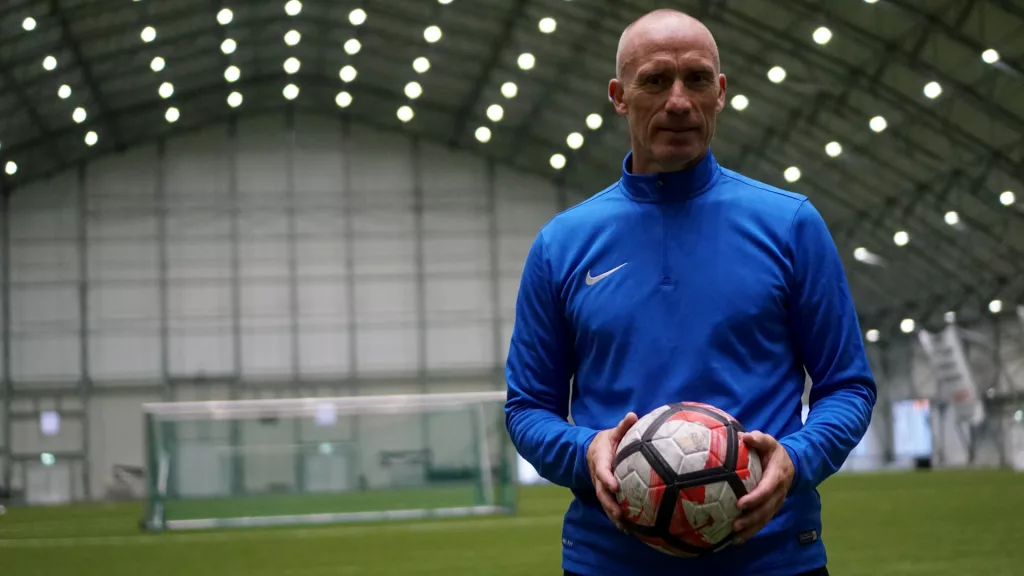
Positioning relative to the attacking player is crucial and can be defined in various terms, such as “rear,” “front,” “obliquely,” or “on the side.” The chosen position significantly influences the appropriate defensive response.
Former world-class defender and national player for Norway, Anders Giske, explores these five defensive positions in greater detail.
Frontal Defending Position
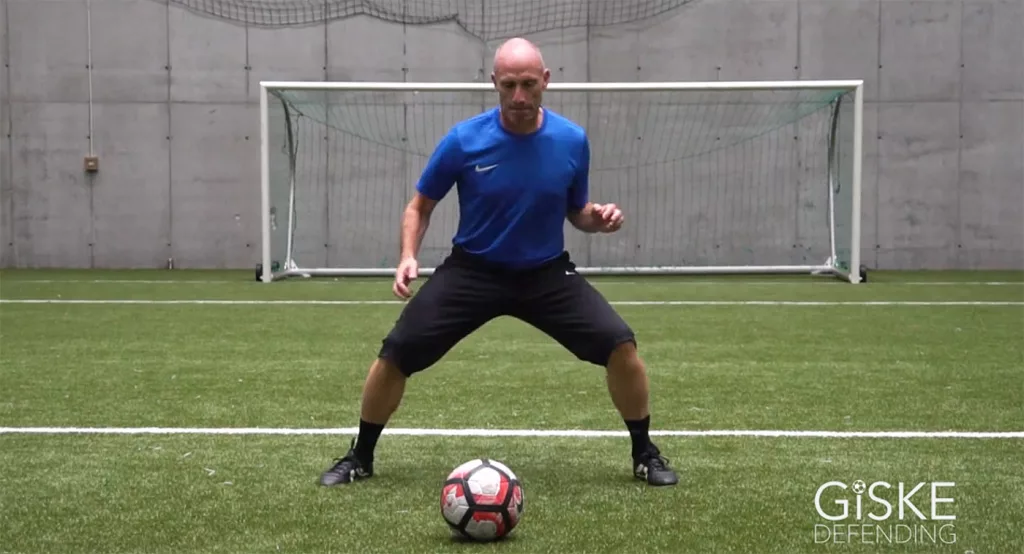
The frontal defending position is the most aggressive of the five. It puts immense pressure on the attacker, aiming to regain possession through a precise tackle or by forcing the attacker into a mistake. To effectively utilize this position, defenders should approach the attacker head-on, maintaining an optimal distance that allows for quick recovery if bypassed, yet close enough to prevent easy passing. This position requires excellent balance and agility to counter the attacker’s moves effectively.
Strengths:
- Superior control over width direction, crucial for intercepting side passes and blocking shots.
- Enables tackling and blocking from both sides, offering versatility in defense.
- Effective for pressing the attacker, forcing them to pass backward or make errors.
Weaknesses:
- Maintaining balance can be challenging, especially under pressure from skilled attackers.
- Moving backward smoothly is often difficult, potentially leaving space open for the attacker.
- Turning effectively to defend against rear attacks or quick directional changes can be challenging.
Best for: Ideal for tall players with a wide range, central defenders looking to block shots, and forwards aiming to prevent long passes after losing the ball.
1v1 against the Goalkeeper

The 4 Ways to Beat the Goalkeeper!
- 37 detailed training drills with specific coaching points for practical learning.
- Analytical breakdowns of game scenes to identify and fix strikers’ mistakes.
- Essential skills development for both individual players and teams
Side-on Defending Position
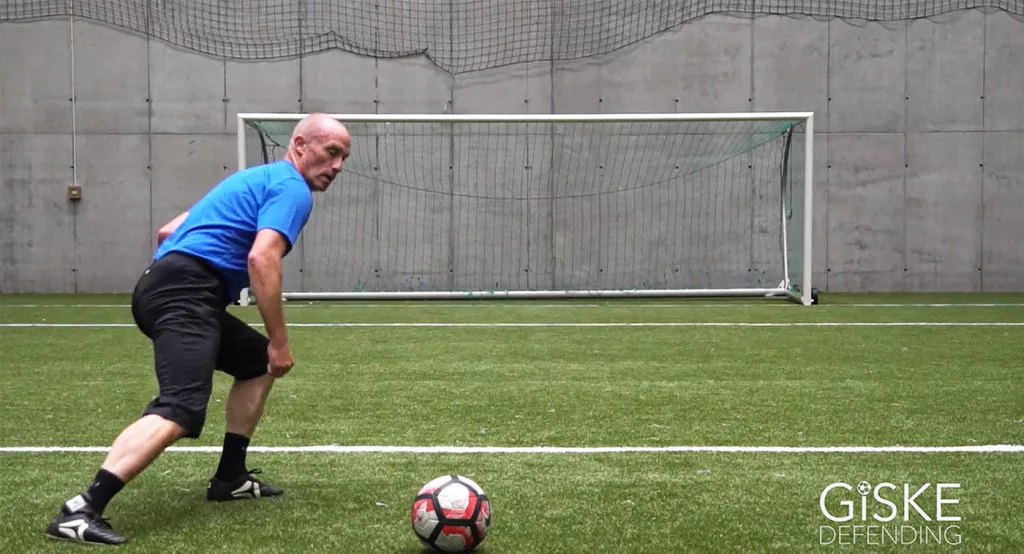
In the side-on position, defenders run parallel to the attacker, primarily focusing on regaining possession through body blocks or slide tackles following a running duel. This position involves closing off one side of the attacker and preparing for a quick-paced duel.
Strengths:
- Provides excellent control in the defense direction, crucial for intercepting and disrupting the attacker’s path.
- Ideal conditions for effective body blocks or slide tackles.
- Highly effective when directly challenged by the attacker.
Weaknesses:
- Not suitable for blocking direct shots at goal.
- Turning to the weaker side can be difficult, momentarily losing sight of the ball and the attacker.
- Preventing forward passes in the longitudinal direction is challenging.
Best for: Particularly useful for fullbacks and wingers and ideal for fast players who can keep up with attacking opponents.
Slanted Defending Position
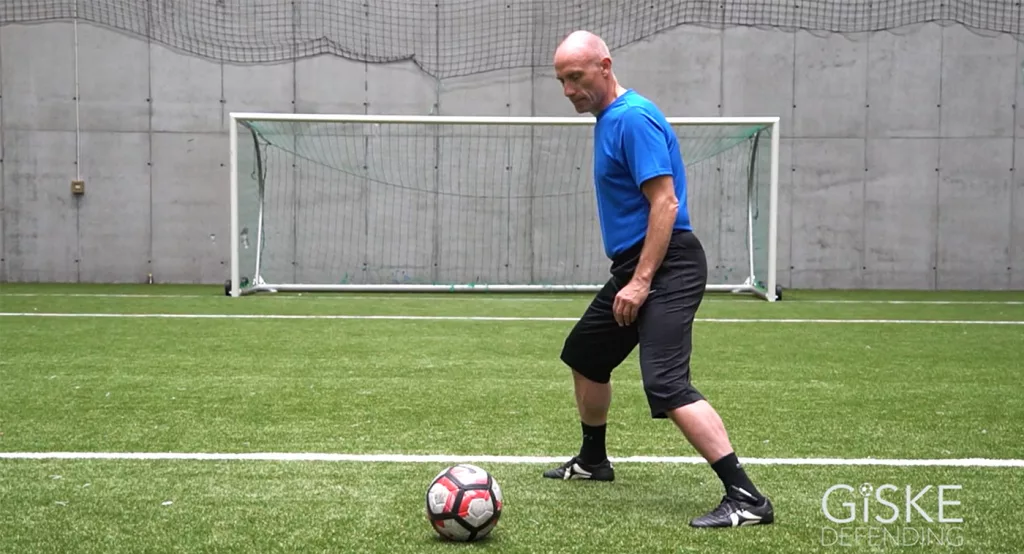
The slanted position is a hybrid of frontal and side-on, offering a versatile approach to defense. The objective is to tackle the attacker on one side or keep pace with them on the other. This position requires defenders to approach the attacker directly, close off one side, and prepare for a duel.
Strengths:
- Excellent control of diagonal movements, allowing defenders to guide attackers in desired directions.
- Suitable for various situations, providing a flexible defensive approach.
- Enables defenders to steer attackers towards their weaker side or away from the goal.
Weaknesses:
- Vulnerable to nutmegs (ball played between the legs).
- Turning to the weaker side can be difficult, especially against quick dribbles or wall passes.
- Finding and maintaining the optimal position for effectiveness can be challenging.
Best for: A versatile technique suitable for all players, especially defenders looking to lead attackers away from the goal or force them to use their weaker foot.
Reverse Defending Position
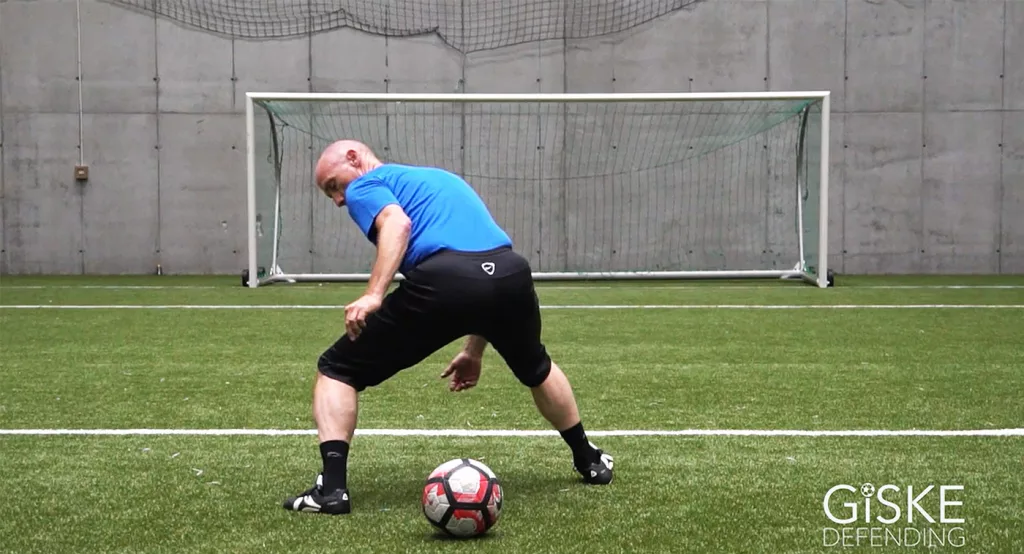
The reverse position is a special pressing technique used in specific situations. It involves inviting the attacker to attempt a nutmeg, then capitalizing on the shortened distance to the ball and the defender’s body orientation to win the duel.
Strengths:
- Excellent control in the defending direction, crucial for anticipating and intercepting forward movements.
- Cunningly wins duels by tricking the attacker, gaining a psychological edge.
- Effective for winning 1v1 situations and gaining mental advantage.
Weaknesses:
- Must be used judiciously and in the right context.
- Mentally challenging to master, requiring confidence in one’s skills and the ability to resist the urge to tackle prematurely.
- Difficult to practice due to its impulsive nature in match situations.
Best for: An advanced technique vital for high-level defenders, enhancing their ability to outwit attackers.
Chase Defending Position
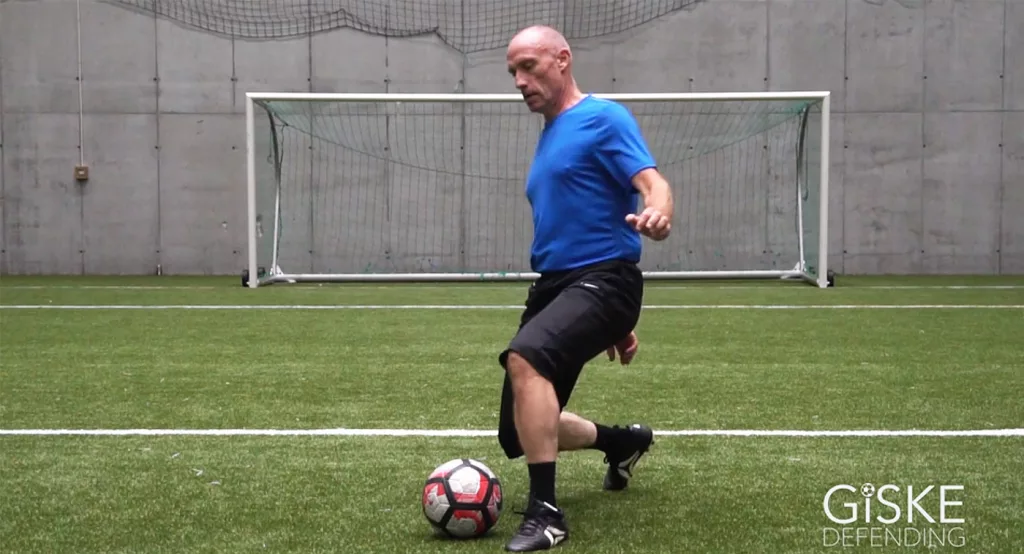
The chase position combines pressing and marking techniques. It involves approaching the attacker with measured steps, ready to tackle or run alongside them at a moment’s notice. The marking aspect involves positioning on one side of the attacker, prepared to intercept the ball before the attacker receives it or to follow them defensively.
Strengths:
- Excellent control of lengthwise movements, offering flexibility in defensive direction.
- The position allows for powerful and diverse movements, unlike the conventional frontal position.
- Ideal against attackers facing the “wrong” direction, enabling control of space both in front and behind.
Weaknesses:
- Automating a new technique takes time and practice.
- Energy-intensive, requiring continuous movement and agility.
- Turning defensively can be challenging, especially if the quality of Leg, Feet, and Torso (LFT) positioning is deficient.
Best for: Suitable for all players, particularly defenders, this technique enhances overall defensive performance and adds a new dimension to the defending game.
1v1 against the Goalkeeper

The 4 Ways to Beat the Goalkeeper!
- 37 detailed training drills with specific coaching points for practical learning.
- Analytical breakdowns of game scenes to identify and fix strikers’ mistakes.
- Essential skills development for both individual players and teams

